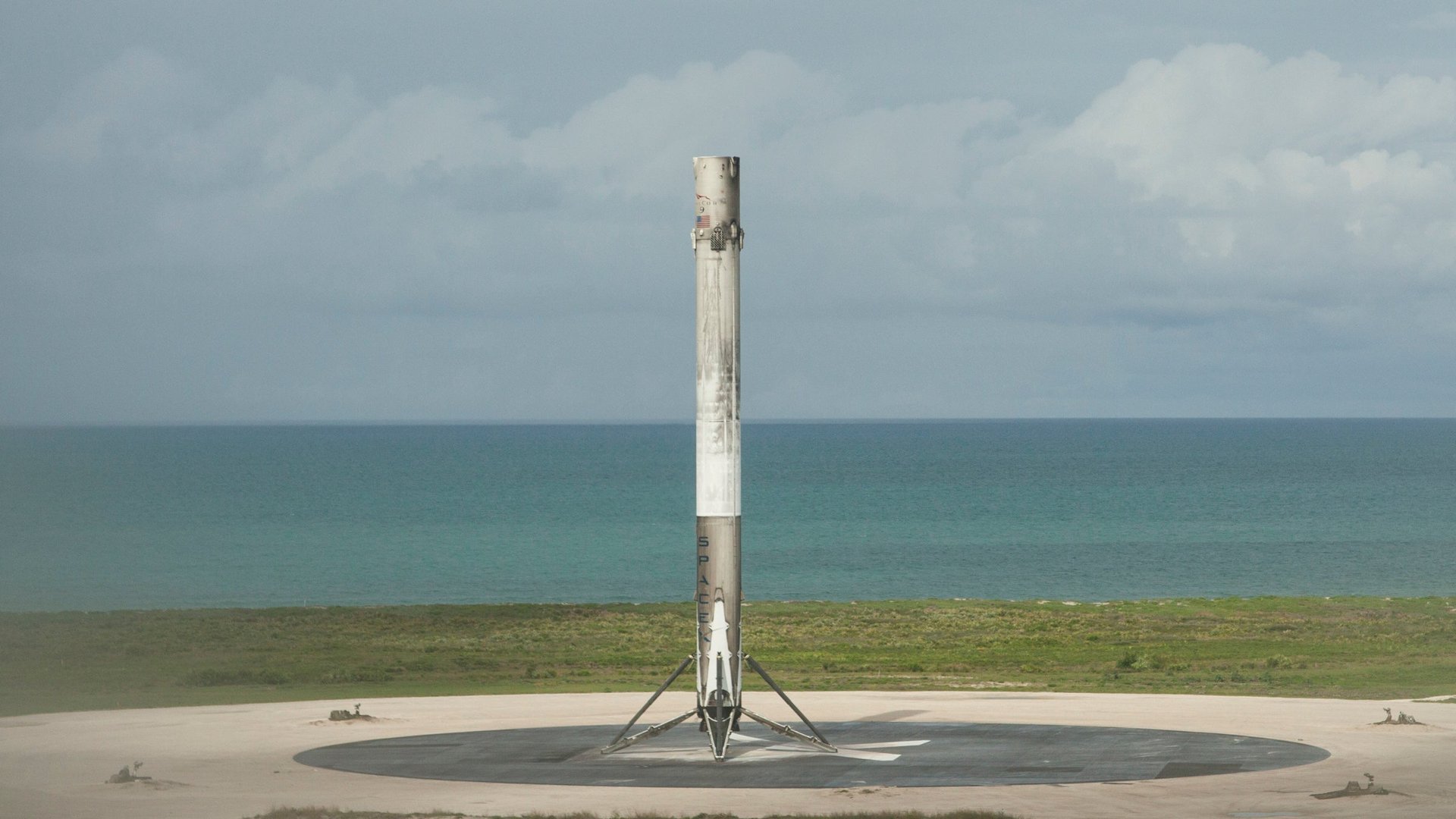NASA will use one of Elon Musk’s lightly-used rockets for the first time
Signaling confidence in Elon Musk’s reusable rocketry, NASA has signed off on using a previously-flown SpaceX Falcon 9 rocket to send supplies to the International Space Station (ISS) next month.


Signaling confidence in Elon Musk’s reusable rocketry, NASA has signed off on using a previously-flown SpaceX Falcon 9 rocket to send supplies to the International Space Station (ISS) next month.
Reusing the Falcon 9 is a key part of SpaceX’s business plan. After developing technology to return the first stage of the rocket safely back to earth, it has re-used recovered boosters three times this year to launch satellites into space, most recently in October.
So far, only private companies have been willing to adopt the perceived risk of using these recycled rockets. Now, NASA, SpaceX’s most important patron and customer, will fly one as well, Associate Administrator Bill Gerstenmaier said this morning. The mission, known as CRS-13 because it is SpaceX’s 13th mission to ISS under its $1.6 billion commercial resupply services contract, is expected to launch on Dec. 8.
The booster for the CRS-13 mission was previously flown on a NASA mission to ISS in June, and returned to a landing pad on Cape Canaveral after the flight. NASA previously okayed the reuse of SpaceX’s Dragon spacecraft, which carries the cargo into orbit to rendezvous with the ISS. This mission is also expected to use a previously flown Dragon.
Flight-proven boosters can chop tens of millions of dollars from the cost of a launch, though it’s not clear if SpaceX will share any of the savings with NASA this time around. Musk is hoping that his company will one day be able to turn around recovered boosters in 24 hours, but so far the turn-around time has been about six months.
In 2017, SpaceX successfully launched 16 Falcon 9 rockets, tying the annual record for a commercial rocket company. While it has faced some recent delays—notably launching a secretive national security payload called “Zuma” and flying its powerful Falcon Heavy rocket—it still hopes to fly this mission to the ISS and launch ten satellites for Iridium before the end of the year.